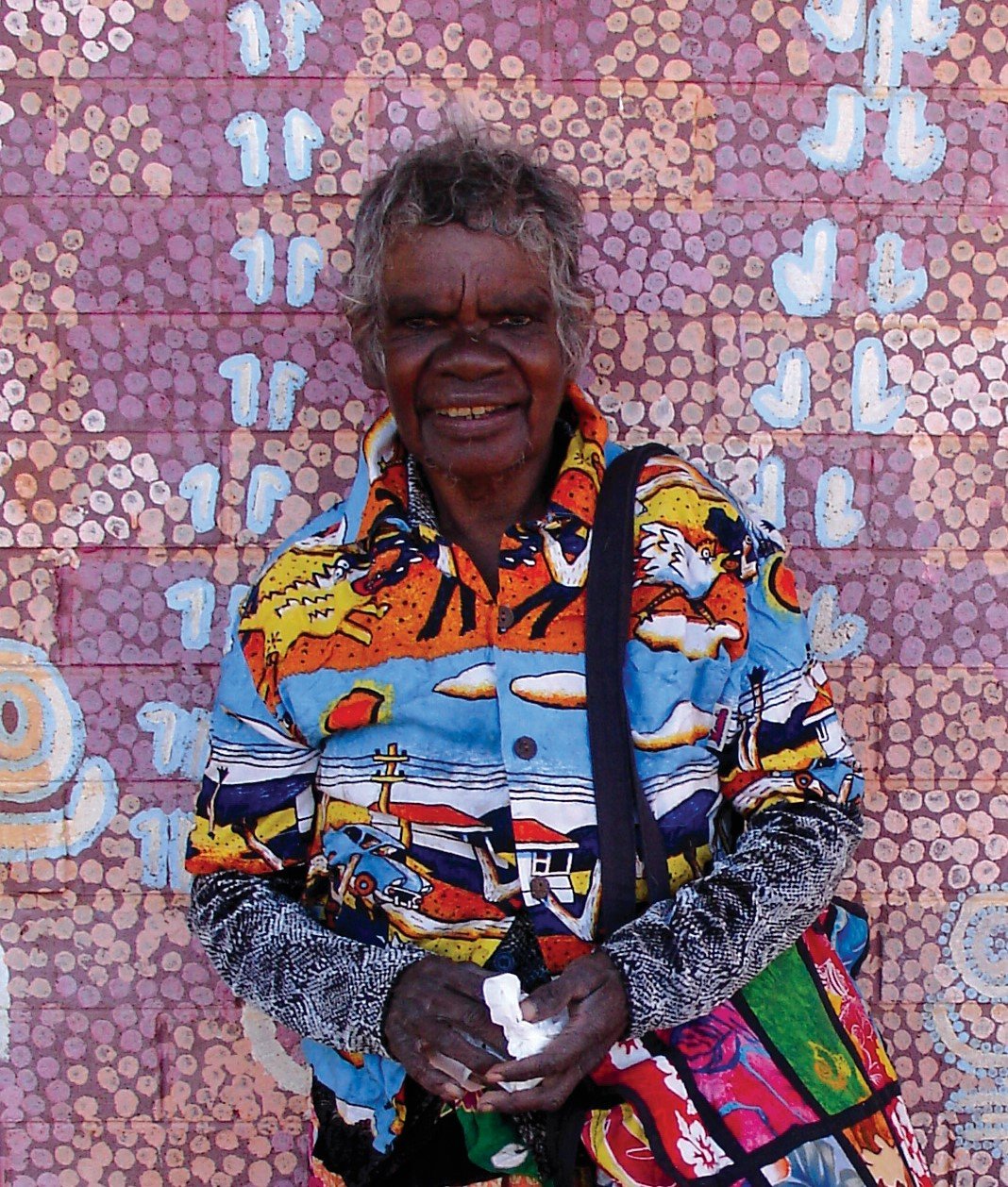JUDY NAPANGARDI WATSON
MARKET ANALYSIS

The rise of interest in works by Judy Napangardi Watson’s on the secondary market, and her status amongst the most important artists of the movement, has been nothing short of phenomenal matching only the careers of Tommy Watson and Paddy Bedford in its incline. Every one of her 10 highest results and 19 of her top 20 were set between 2006 and 2008 with the only exception having sold in 2005. There are two main reasons for this. The splendid use of her Hair String image on the cover of the catalogue for the National Gallery of Victoria’s Colour Power exhibition held during 2004, and her ability to create large, highly colour charged and dynamic works. Her works first appeared at auction in 1994 yet by the end of 2005 only 8 of the 22 works offered, or 36%, had sold and her career average price languished at just $4791. However her Aboriginal Art Market Rating jumped from just 0.713 in 2005 to 2.432 by the end of 2007 and in 2008 increased by a whopping 37% to 3.325. This saw her rise from the 46th to the 33rd most important artist of all time in a single year as she leapfrogged Naata Nungurayi, Kathleen Petayarre and Freddie Timms amongst the ranks of living artists where she now sits firmly at 11th.
While her accolades are richly deserved this phenomenal rise was achieved partially on the back of two resales that followed in quick succession. Her Magnum Opus, Women’s Dreaming created for Peter Van Groessen in 1995, which had been held by Kimberley Art Gallery in Melbourne until first offered at auction in 2006, originally sold at Lawson-Menizes November auction to a Rod Menzies backed consortium for $192,000 (Lot 155). With the onset of the economic downturn the consortium members must have decided to try their luck at resale following another international advertising campaign. It turned out to be a poor decision. They made little if any profit after commissions when it sold for $216,000 in the Lawson-Menizes March 2008 sale (Lot 231). It may well have been the same consortium that purchased Snake Vine 1995 with the same provenance in May 2006 for $28,800 and received just $30,00 when it resold in March 2008 (Lot 244). Despite the lack of success of these punters, resales of this magnitude have seen her career total sales jump dramatically in just 4 years. Her total second art market sales stood at just $38,332 in 2004 compared to today’s $856,622. Yet amazing, as it may seem, Sotheby’s has made not one of these sales. As would be expected Lawson~Menzies having championed this artist have 26 sales for a total value of $775,860. Their closest competitor has been Mossgreen and Bonhams and Goodman with just 4 sales apiece and a combined total of $57,865.
With such exposure in the secondary market it is little wonder that there has been a definite buzz around Judy Watson’s work in primary galleries. This has been stimulated further by the entry of a number of independent dealers with their minds firmly set on investment paintings. Geoff Henderson, owner of Art World, is a perfect example. The former Executive Director of Finance and Sales in a FTSE top 20 company Henderson identified those artists he wanted to work with; set up a first rate facility where they can paint; employed staff experienced in art; commissions major works; and pays top dollar. Judy Watson has joined a number of other major artists who have worked with Henderson since the beginning of 2007. An example of these major works, My Dreaming 2007, was submitted to Lawson~Menzies by a former Henderson employee for their October 2008 sale (Lot 245). While the stunning 180 x 297 cm work estimated at $90,000-120,000 sold for just $48,000 this represented a good wholesale return on a work for which the artist was paid around $20,000. It was as much as the dealer would have expected had he offered it to a gallery. There are many more works of this quality currently sitting in galleries and, with the prospect that the secondary market will remain static for some time, collectors should be able to purchase major works of this quality for well below gallery prices at auction over the next few years.
Judy Watson Napangardi is an irrepressible energetic artist who produces dynamic joyful works, full of colour. Her shimmering canvases emulate the Warlpiri notion that health, well-being and allure are exemplified by the glint of refracted brightness. Her paintings convey ancient stories with a modern sensibility. This will ensure that they stand amongst the most desirable of all contemporary Australian art well in to the future, and continue to propel her in to the most select group of Aboriginal painters of all time.
© Adrian Newstead

